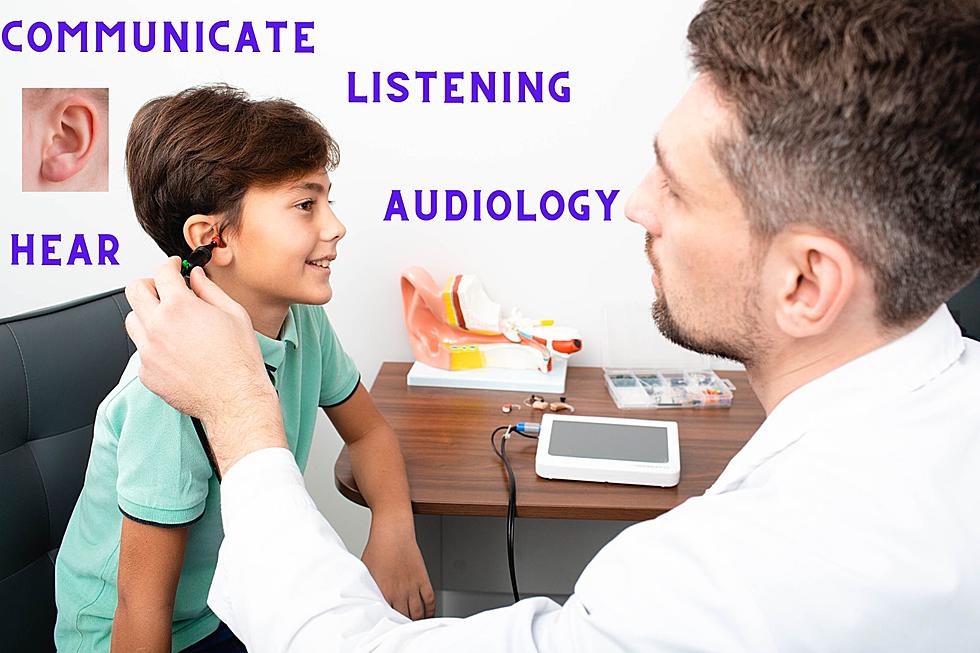
Is a hearing test on your child’s back-to-school checklist? It should be
👂 Should a hearing test be on a child's back-to-school checklist?
👂 Disruptive class behavior may be due to a hearing issue
👂 Parents should be more aware of hearing and communication issues
Backpacks, notebooks, pens, and pencils – you may think you have everything a child needs to have a successful school year, but should a hearing test also be on your child’s back-to-school checklist?
Not diagnosing a hearing problem early enough can lead to learning disabilities and impact a child’s social and behavioral skills, said Elena Ballezzi, an audiologist at AtlantiCare Health Network.
The goal of the back-to-the-school list is to make sure kids have everything they need to thrive, Ballezzi said.
“We as parents can see and touch what they wear, the backpacks they carry, the lunch bags we pack. It helps children throughout their day. But how children hear and process their school day and every moment of their life impacts their learning and overall well-being,” Ballezzi said.
What are the types of pediatric hearing disorders?
There are three types of hearing disorders among children.
The first is due to ear infections that can be medically treated, Ballezzi said. The second is sensory, which cannot be medically treated, but can be improved with hearing devices. The third is a central type where the hearing is normal, but the ability to use it is impaired.
Central Auditory Processing Disorder is one of the most common issues seen in school-aged children, Ballezzi said.
“This affects how children’s ears and brains communicate with one another. So, because something prevents the brain from recognizing and interpreting sounds correctly, even though the child might hear everything you or their teacher say, they have a hard time processing what the words mean,” Ballezzi said.
This, in turn, can impact a child’s ability to learn, communicate, and socialize.
What are some signs a child is experiencing a hearing problem?
In school-aged children, Ballezzi said they may be uninterested in things. They may seem disruptive in class. Teachers might say they’re not focused or easily distracted.
Additionally, kids may say words wrong or may ask for words to be repeated. They might struggle to hear in noisy environments or to follow verbal directions or multi-step directions.
Kids might have challenges with spelling, phonics, verbal math problems, language, or reading.
Oftentimes, teachers will tell parents their children are being disruptive and not paying attention in school. Sometimes they are blamed for behavior that may be a hearing issue. That’s another reason why a hearing test before the school year begins is so crucial, Ballezzi said.
According to an American Speech Language Hearing Association survey, 39% of those surveyed said lack of awareness about signs of communication disorders is a leading factor that can hinder parents or caregivers from taking action on these disorders.
Ballezzi agreed. She says the lack of awareness of hearing and communication issues has improved over the years. It’s improved by the availability of information from the internet, greater involvement with discussions with health care providers, mandated developmental screenings, and improved communication with other family members.
“But it’s important to hear and understand that it’s a team effort when it comes to making sure children hear and learn about their world. The parents are the captain of that team,” Ballezzi said.
How did COVID affect children’s hearing?
During the COVID pandemic, many children struggled and fell behind with reading, spelling, and their core educational achievement, and academic performance, Ballezzi said.
Now, in post-COVID, it’s important to make sure children are not being misdiagnosed. With central auditory processing, it can help manage and help apply classroom accommodations for those that need it. Therefore, having a child’s central auditory processing checked out with a hearing test can prove to be very beneficial.
What happens when a child goes for a hearing test?
Ballezzi said it's important when a parent is doing that back-to-school pediatrician visit, they need to alert their child's health care provider to any signs the child might need an audiologist to evaluate them.
A regular hearing test is about 20 minutes long. Audiologists will test to make sure a child’s hearing threshold is within its normal limits.
The central auditory processing takes a bit longer. That is because audiologists must look to see how the brain perceives sound and understand the speech signal that is presented. They need to make sure it’s the most optimal possible so the brain can understand what is being done.
“Especially with the younger population, we want to make sure the more time spent using peer interactions or even interactions with parents or loved ones, keeping them off the tablets or at-home technology, can really, really help,” Ballezzi said.
Reading, talking, singing, and other similar interactions can play a role in their success, she added.
More details from the ASLHA study can be found here.
Report a correction 👈 | 👉 Contact our newsroom
'Fast Times at Ridgemont High' Cast: Where Are They Now?



